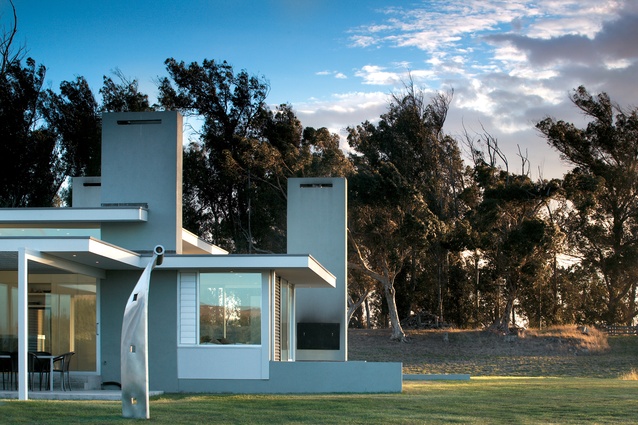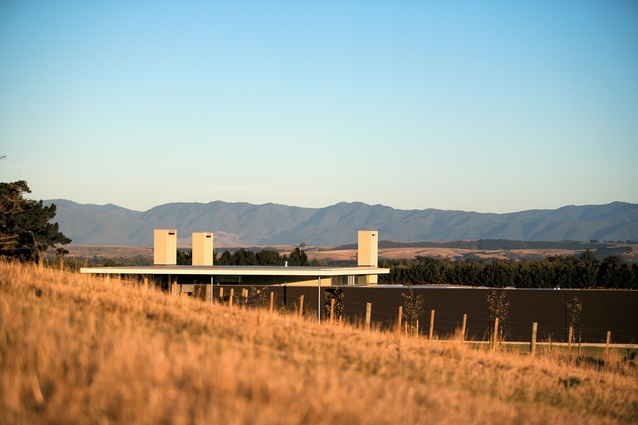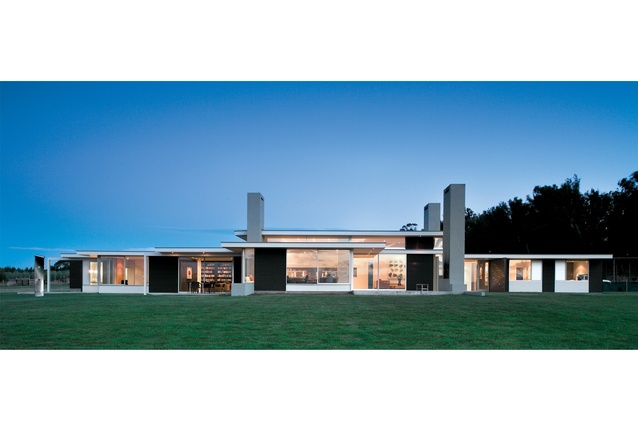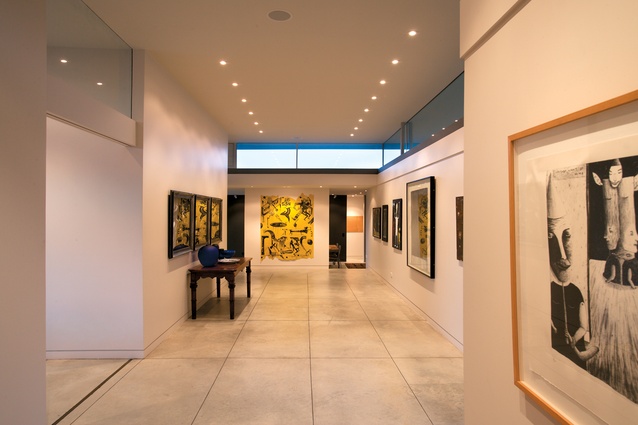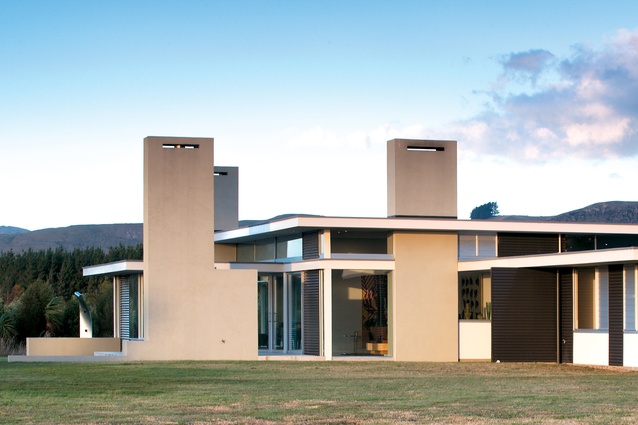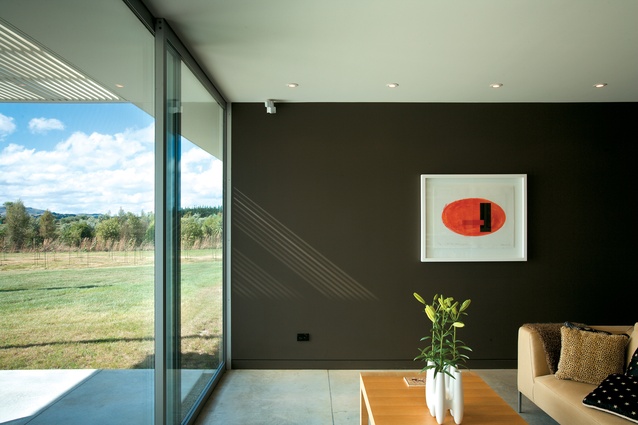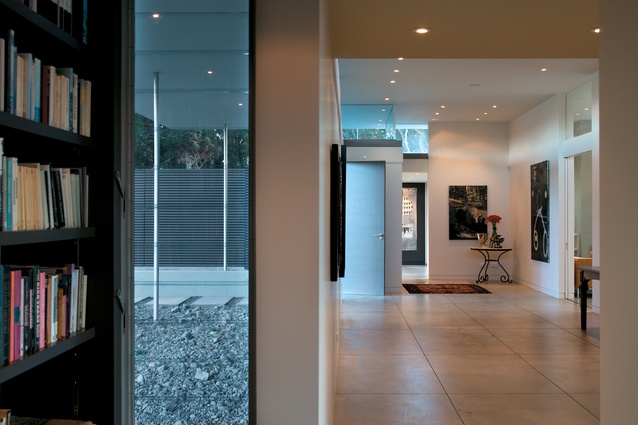Houses Revisited: Pastoral idyll
The art in this Gerald Parsonson house in the Wellington hinterlands is visible on the inside and the out, first published in 2006.
Wellingtonians feel they have the best of both worlds: a compact, lively city, and, on their doorstep, a countryside of many varied landscapes. In an hour, they can reach sites that could be from some Mediterranean hinterland (well, that’s a bit of a stretch), or Nepalese hillside (that’s more like it), or even the expansive grasslands of Argentina (minus the gauchos). To have an opportunity to create a building in any of these settings is a client’s, and an architect’s dream.
A Wairarapa rural block was at hand, and a brief drawn up: Create a house that engages with the landscape by allowing it to flow right up to and into the house. Does this allude to the heritage of the rural shed? Perhaps. Anyway, the brief was given to Gerald Parsonson, which meant that if a ‘shed’ was the goal, it would surely be elegant.
The site for this new house is near Martinborough, a pleasant hour or so’s drive (the Remutaka Hill notwithstanding) from Wellington. Like any property in any rural district anywhere, it is easy to find – for a local: “Just follow the road past the dead tree on the left and it’s straight ahead of you three miles past Johnno’s house”. But the trip and its impromptu detours are worth it. One drives down to the house to be confronted by the “wall”. It is, indeed, a kind of rural shed wall, with a verandahed entry. Visible over the wall are some Lutyenesque chimneys.
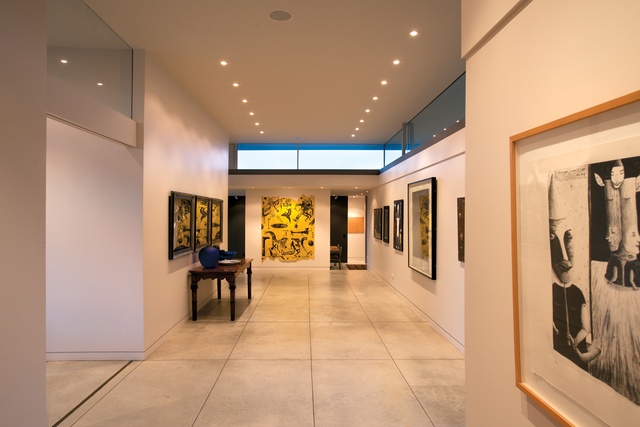
Once in the house, the visitor is guided into a top-lit entry hall. Neither overly grand nor too personal, the hall is a high-studded transitional space between the outside and the calm of the interior. The entry hall doubles as a gallery space. In its proportions and with its natural light, clean wall space, and freedom from distracting elements the gallery, unlike many spaces developed for the exclusive purpose of viewing art, is eminently suitable and usable. This space forms a central part of the house, especially when visitors come to stay. It acts as a buffer to the living areas while doubling up as a dining room for larger family gatherings at Christmas and other special occasions.
From the entry gallery, the movement is through the house towards the view that awaits at the front of the house. (As with many houses of this genre the ‘front’, to the building’s owners, means the area where you spend your day; visitors are more likely to identify the ‘front’ with the entry door.) At the front of the house, the gallery is turned inside out. The rural landscape and its vistas become the artworks hanging in full view. The various functional rooms of the house have been carefully composed with views in mind. Weather and indoor/outdoor flow were important design considerations. The classic Gerald Parsonson eaves have been used to filter the light while maintaining a high level of ambient natural lighting throughout. The eaves also play their part in the house’s nocturnal drama, allowing flattering light to reflect from the soffits. Through the use of a clever structural solution, and more than seven tonnes of steel, the roof appears to float effortlessly over the building it protects.
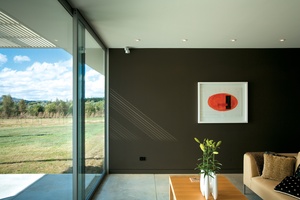
The rooms are finished with a modernist colour palette: white walls, natural timber, concrete floors, and dark cladding to the outside. This classic materiality provides a clarity on the interiors, and a backdrop of clean surfaces whose ambience changes as the sun moves and weather varies. Shadows play dramatically across the walls and floors, giving the house an active feel. As lighting conditions change over the day, so the space is transformed, allowing inhabitants to use the rooms in different ways.
The living areas are carefully arranged to have the kitchen as the central focus. Although the kitchen is easily accessed it can be closed off should serious cooking concentration be required. As the house’s centre of gravity, the kitchen provides a point from which other functional areas can extend. The main bedroom is sited to the north and the self-contained guest rooms to the south. This deployment offers guests privacy and some independence. Between the main bedroom and the guest quarters the meeting areas and lounge, dining and living areas are clustered around the kitchen.
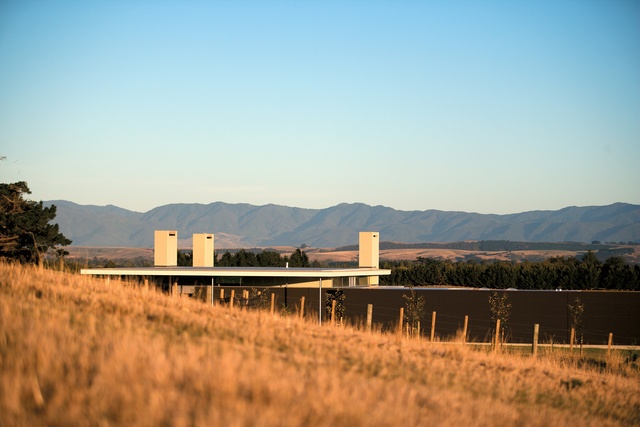
The house is designed to be of its landscape. The tall chimneys are in appropriate scale when viewed from around the site, with its surrounding tall trees. It was also the intention of the clients that significant landscaping be carried out to enhance the property and complement the architecture of the house. In particular, the front or living side of the house which opens onto the site is to be carefully integrated with planting. Moving around the house it is clear that when the landscaping has become established microclimates with intimate spaces will evolve. The landscaping scheme will ensure that the rural landscape in the foreground and the distant hill vistas beyond become framed views from the house.
In sum, this is a house of simplicity and sophistication, and its quality has been acknowledged by the NZIA which gave it a New Zealand Award for Architecture in 2006. I would like to visit the house again in ten years’ time. By then, the house, with its assured arrangement of indoor/outdoor spaces – a trope much admired in New Zealand but rarely achieved on this scale – will have settled comfortably (but not complacently) into its landscape.
Click here to see more Houses Revisited. And sign up to our email newsletters to receive Houses Revisited straight to your inbox.
Note: These are stories from our archives and, since the time of writing, some details may have changed including names, personnel of specific firms, registration status, etc.

